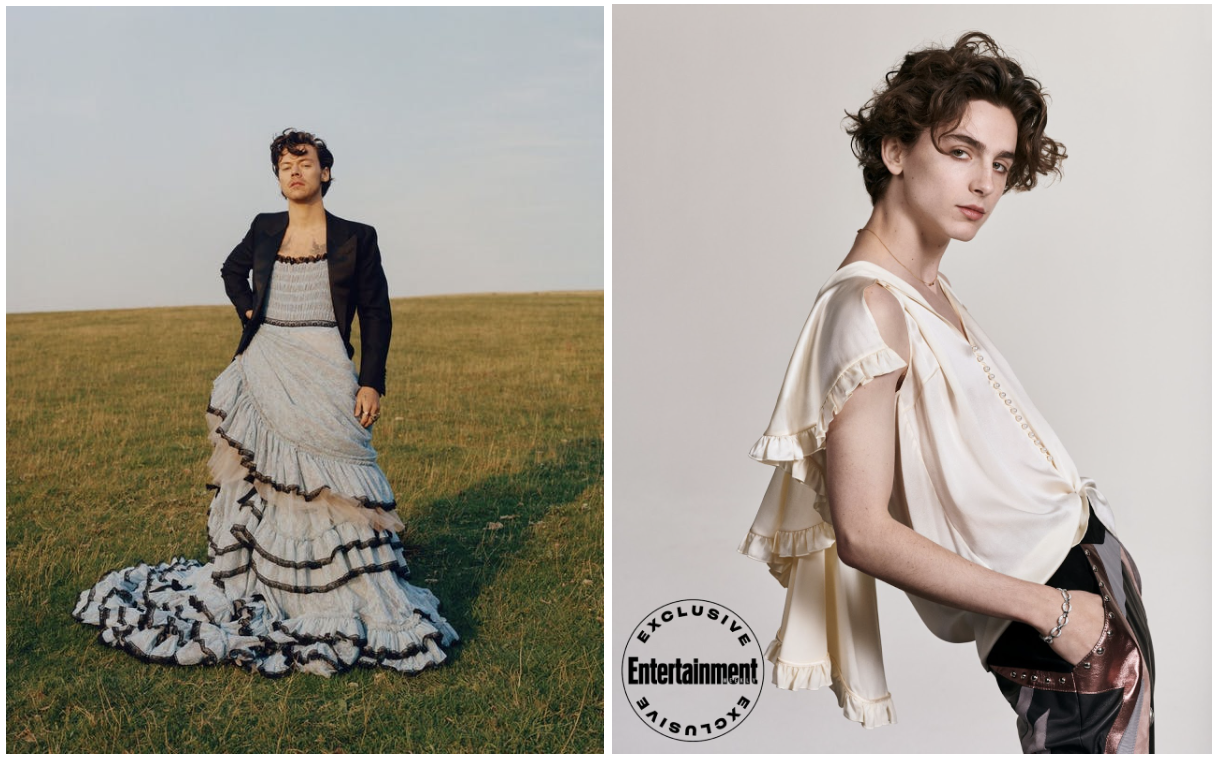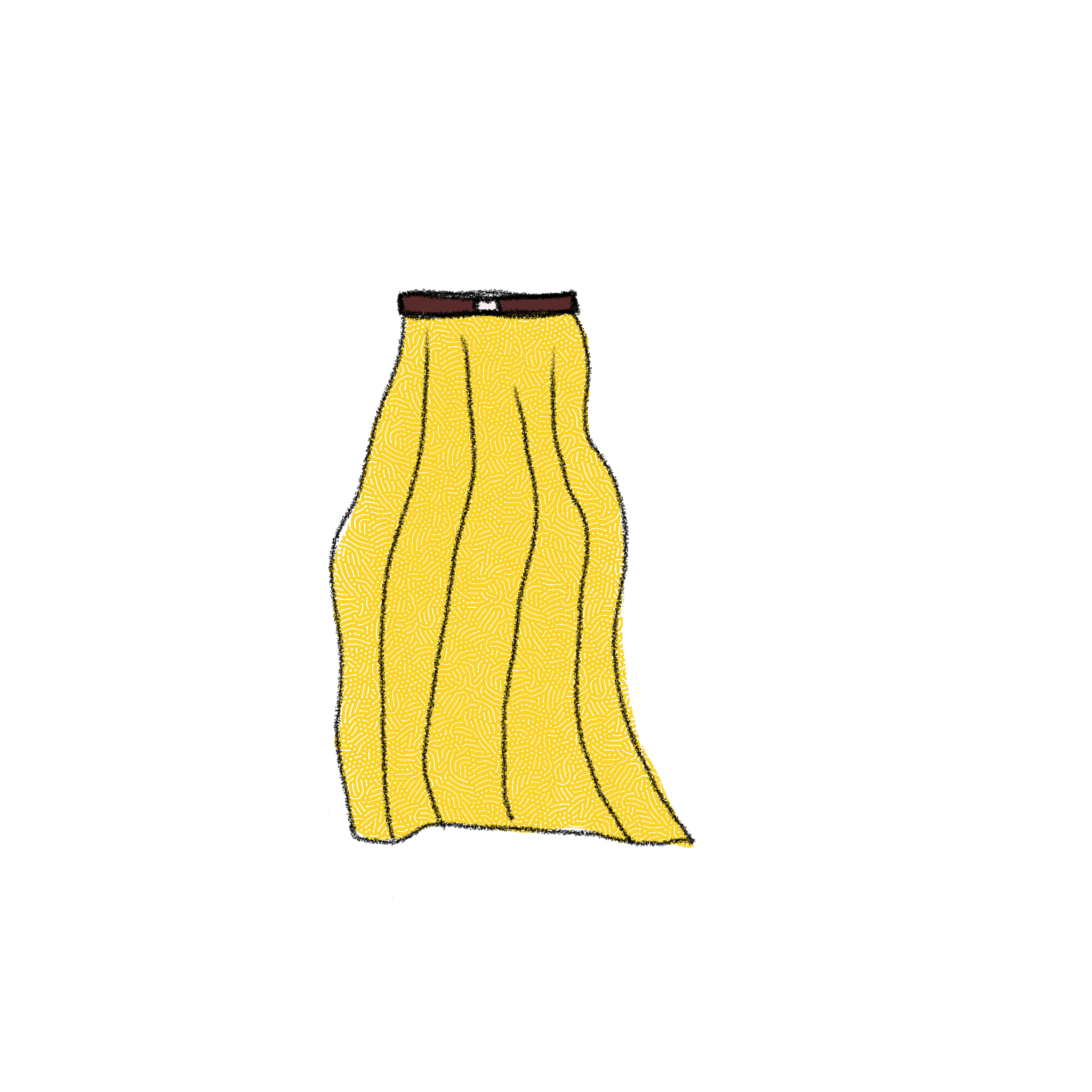Make Way For The Female Gaze – The Rise of Feminine Men
AMY ANG dives into how the rise of prominent feminine men has influenced Singapore’s male population.
Timothée Chalamet (left) in the movie Dune. Photo taken from Chiabella James/Warner Bros. Pictures. Harry Styles (right) wearing a Gucci Gown for a photoshoot. Photo taken from Vogue.
BY
Amy Ang
Publicity Manager
Hype Issue #55
Published on
June 1, 2022


From Harry Style’s controversial Vogue photoshoot where he dons traditionally feminine clothing pieces to Timothée Chalamet’s delicate features that leave him in the envy of many women, the rise of femininity in men has become more accepted by society in recent years. With more men breaking down gender barriers and wearing brighter clothes traditionally associated with femininity, you might wonder how this affects the public’s perception of masculinity and men in today’s society.

Harry Styles (left) in a dress for a photoshoot with Vogue. Photo taken from Vogue. Timothée Chalamet (right) for a photoshoot with Saoirse Ronan. Photo taken from Entertainment Weekly.
Men who display feminine traits in either their actions or dressing style are called ‘effeminate men’. Some popular examples are Harry Styles and Timothée Chalamet. The former wore a dress for a Vogue Magazine shoot in 2020, while the latter has constantly been involved in emotionally vulnerable acting roles such as in Call Me By Your Name and Little Women.
No matter how certain male role-models might display femininity, both are playing an important role in shaping society: challenging the idea of toxic masculinity.
According to a verywellmind article, toxic masculinity refers to the societal and cultural pressure for a man to act in certain ways associated with ‘manliness’. This includes, but is not limited to, being physically strong, having a power status and not showing signs of emotions.
If you have ever heard of phrases like: “Stop ____ like a girl! Man up.” or “Real men don’t _____.” , then you have encountered toxic masculinity.
To start breaking out of the cycle of toxic masculinity in Singapore, we can begin by tackling the stereotypes often associated with feminine men.
Mr Braven Yeo, 26, works as a cinematographer in Singapore. While he posts his work on @bravencine on Instagram, he has over 48.2k followers on TikTok where he posts lifestyle and comedic videos, sprinkled with a dash of fashion.
“In the past year, I started to expand my sense of style to be more open, which led me to experiment and [dress up] with ‘feminine’ pieces,” he said.

Braven Yeo, wearing feminine clothes, such as scarfs and brightly colored clothes, with a pair of boots (left). Braven with pigmented eyeshadow and crystals around his eyes (right). Photo courtesy of Braven Yeo.
Before the change, the 26-year-old wore outfits that leaned more towards the traditionally masculine side: jeans and cargo pants.
While his family did not take much notice of the changes in his fashion style, his friends certainly did.
(I mean, if your friends changed the way they dressed and you didn’t notice … are you really friends? Deep thoughts. Don’t spiral.)
His sexual orientation was often questioned based on the clothes he wore. “People started wondering if I was gay,” Braven said.
He found this to be ‘very silly’. To him, there are no categories when it comes to clothing. Clothes are simply clothes. Braven has pointed out that these perceptions often stem from stereotypes of what type of clothes the majority of the public think people should wear.
He is not the only one with that belief. Kong Jin Yuan, 19, another local TikToker who does fit checks videos using vintage Chinese songs on his TikTok account, @ahgongjinn, also shares the same thought. A ‘fit check’, short for outfit check, commonly refers to showing off an outfit someone is wearing by filming a video.
“I don’t think there’s a need to differentiate feminine and masculine clothes because these are perspectives and ideas [that are] taught by society when we grow up,” Jin Yuan said. “My parents didn’t really care when I wore my mother’s clothes because they didn’t think [it was] a big deal… unless I [was] wearing a dress or skirt [outside].”
While it is heartwarming to see more men opening up to exploring gender norms in clothing, we must also understand that in the years gone by, men have also been testing these boundaries. According to Ms Daniela Monasterios Tan, 34, a fashion lecturer at Lasalle College of the Arts in Singapore, modern men have been exploring clothing and identity since “the glam rock movement in the 1970s”.
“Celebrities like David Bowie and Prince have tried to challenge gender binaries through clothes. Kurt Cobain would wear dresses and silk slips.” Daniela said.
Kurt Cobain, who was the lead vocalist for the rock band Nirvana, wore dresses on many occasions, including a performance at Hampshire College in Amherst in 1990.
According to Daniela, “ruffles, soft materials and more decorative clothes” are some examples that people stereotype as feminine clothing. Just take a look at Timothée Chalamet in Little Women as an example.
Some people might feel that the clothes worn by the male actors in the Netflix show, Bridgerton, can also be interpreted as feminine as well, due to the delicate look of the outfits.

Saoirse Ronan and Timothée Chalamet in Little Women (left). Photo taken from Wilson Webb/Courtesy of Columbia Pictures Regé-Jean Page as The Duke in Bridgerton (right). Photo taken from Liam Daniel/Netflix © 2020.
“Society is slightly less oppressive now, and men do wear more experimental clothing thanks to musicians and celebrities who do it.” Daniela added.
(I’m looking at you, Timothée Chalamet. Let’s give it up for Timmy-Tim, yeah, it’s Timmy-Tim!)
TikTok has also given men more freedom to express themselves. Both Braven and Jin Yuan have gone viral several times on TikTok for their outfit check videos, which helps to normalise the concept of men wearing more feminine clothes locally.
“I don’t believe that masculinity is so superficial, that it is only about being buff, behaving like a bro, drinking beer & wearing cargo pants.” Braven said. “Don’t be afraid of expressing yourself with the way you dress. Find references or icons (regardless of their gender) that dress in a way that you find appealing and slowly build your style from there.”
“I don’t believe that masculinity is so superficial, that it is only about being buff, behaving like a bro, drinking beer & wearing cargo pants.”
Not every man might be open to trying out feminine clothing. However as more local men on social media begin to embrace this fashion style, the perspectives of many others who believe there’s a certain way a man should dress might change. Who knows, maybe one day you’ll see more guys wearing dresses than cargo shorts.



Great information shared.. really enjoyed reading this post thank you author for sharing this post .. appreciated
winter music
Looking forward to your next post. Keep up the good work!
I appreciate your creativity and the effort you put into every post. Keep up the great work!
relaxing music sleep
naturally like your web site however you need to take a look at the spelling on several of your posts. A number of them are rife with spelling problems and I find it very bothersome to tell the truth on the other hand I will surely come again again.
Thank you for your sharing. I am worried that I lack creative ideas. It is your article that makes me full of hope. Thank you. But, I have a question, can you help me?
I don’t think the title of your article matches the content lol. Just kidding, mainly because I had some doubts after reading the article.
Your point of view caught my eye and was very interesting. Thanks. I have a question for you.
Your article helped me a lot, is there any more related content? Thanks!
Can you be more specific about the content of your article? After reading it, I still have some doubts. Hope you can help me.
Thank you for your sharing. I am worried that I lack creative ideas. It is your article that makes me full of hope. Thank you. But, I have a question, can you help me? https://www.binance.com/join?ref=P9L9FQKY
Your article helped me a lot, is there any more related content? Thanks!